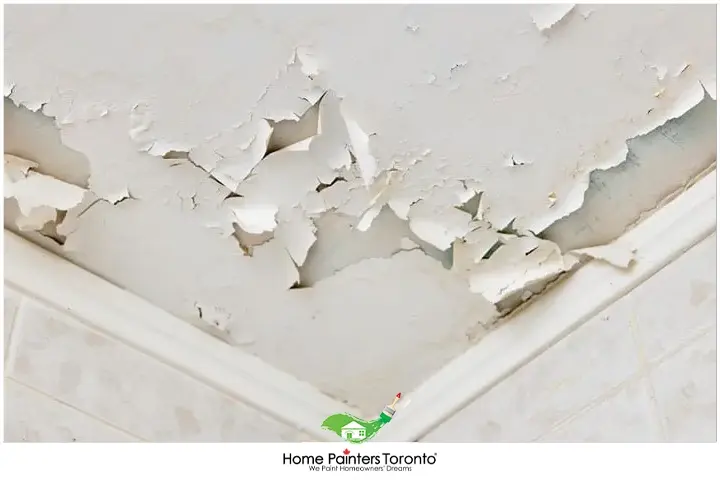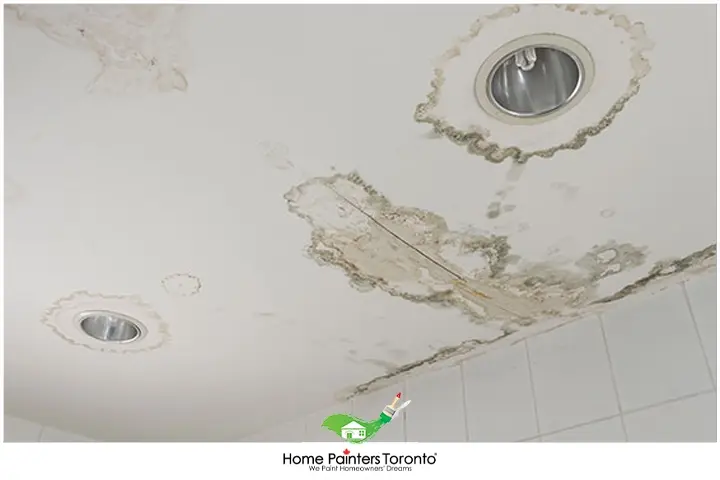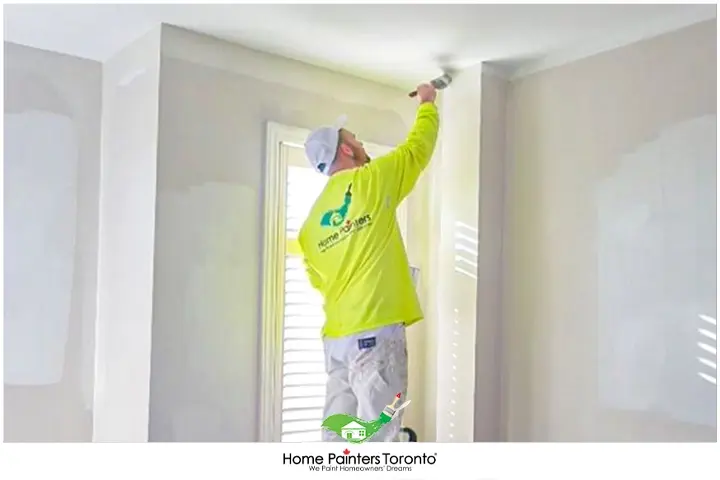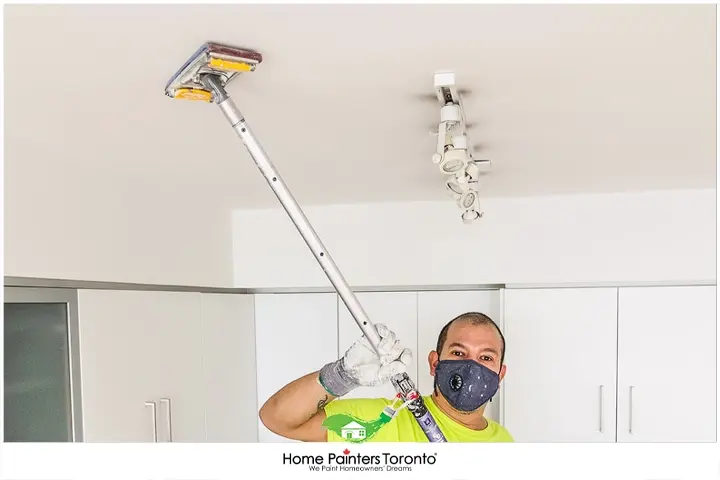
Ceiling paint problems are often overlooked until peeling paint brings it to our attention. Peeling paint on walls and ceilings can be a distracting eyesore, not to mention the potential damage it may hint at in your home. Understanding the root causes of this issue, how to prevent it, and the steps necessary to repair it is crucial. This guide takes you on a comprehensive journey into the world of ceiling paint peeling, aiming to arm you with the knowledge to maintain beautiful, problem-free ceilings in your home.
Why is Your Ceiling Paint Peeling?
Have you looked up above lately and noticed that a little something is off? Ceiling paint peeling can occur for several reasons. The most common causes are excess moisture and improper painting techniques. No matter what actually causes the paint to peel, you will need to remove all of the peeling paint to start. Then, you’ll need to fill and plaster the surface, sand it until smooth, and prime, and then apply a new coat of paint. This can be a long process, but with the help of professional painters, they can quickly repair any damages, and you’ll be on your way!
Peeling Paint On the Ceiling is Not Ideal
Ceiling paint peeling is not attractive, by any means. In fact, it actually lowers the attractiveness of your home by a lot. It can turn what was a beautiful and elegant home into a rotting structure or turn a very clean bathroom into an unsanitary area. Not to mention that if the peeling happens on ceilings or interior walls, it could potentially cause health issues for your family. Falling paint pieces can be extremely dangerous as well. Also, breathing in paint dust can greatly affect your lungs. All this is to say that peeling or damaged paint on the ceiling is no good for any home, and there are ways to combat this problem.

What Are the Common Causes of Ceiling Paint Peeling?
- Moisture: In places where there is high humidity and high levels of moisture (washrooms), your ceiling paint peeling should come from that.
- Water leak: When the moisture gets into the ceiling, it will make itself known in many ways. You will notice watermarks, and the paint may start to peel or bubble up.
- Build-up of scum or soap: Typically in washrooms, this will also cause ceiling paint to peel. This will usually be in the shower, toilet, or sink area, and it can even happen in the kitchen.
- Candles: You should be careful where you light your candles. If there has been lots of smoke or even fire damage, you should take notice of the effect it could have on your ceiling.
Other causes:
- Water
- A dirty surface and poor surface preparation
- High temperatures and intense sunlight
- Too many layers of paint
- Many different coats of paint on the same surface
- Low-quality paint
- Expired paint
- Extreme dryness
- Corrosive substances
Water is the main cause of peeling or flaking paint in bathrooms, ceilings, and on exterior walls. When water hits the coats of paint, the layers separate and detach from the surface. This results in bulging, cracking, and eventually peeling. The water can come from a leaking roof, soffit, or gutter. It can also come from a permeable wall allowing water to penetrate the surface. Lastly, when in the washroom, water splashes can occur and that can affect the peeling paint in that section of your home.

Preventing Ceiling Paint Peeling
Taking proactive steps to prevent paint peeling can save you time and money in the long run. Here are some measures you can take to avoid facing this issue:
1. Control Moisture
Proper ventilation is vital in damp areas of your home, like the bathroom or kitchen. Use exhaust fans or open windows to reduce humidity and decrease condensation on your ceiling.

2. Prepare the Surface
Before you repaint your ceiling, ensure that it is clean and free from dirt, dust, and grease. Use a stiff brush and mild detergent to clean the surface thoroughly. Once the ceiling is clean, prime it with a high-quality, compatible primer that forms a proper bond with the paint.
3. Use High-Quality Paint
Investing in high-quality paint can save you from future hassles. High-quality paint contains the necessary ingredients to create a strong bond with the surface and is less likely to peel.
4. Climate Control
Temperature fluctuations play a significant role in paint peeling. Insulating your home and regulating the temperature can help maintain your paint job.
Some tips along the way
Peeling paint in your bathroom or any space in your home should not alarm you. This is a common occurrence. As with anything in life, there is always a solution to your problems. In bathrooms, peeling paint occurs because of the high levels of humidity and moisture from showering. It is extremely important to use your bath vent or fan 10 to 15 minutes after you shower because this can prevent moisture from seeping into your bathroom. Let it run until you feel the moisture has eventually left. Do not let the peeling paint alarm you. Problems always arise. The vital thing after noticing the problem is to fix it whenever you can. Whether you do it yourself or with the help of home painting services.
How To Fix Peeling Paint On A Ceiling
If your ceiling paint is already peeling, you need to address the issue before repainting. Follow these steps to ceiling repair and give it a fresh coat of paint:
1. Remove Peeling Paint
Use a putty knife or scraper to remove the peeling paint gently. Be cautious not to damage the underlying surface.X
Evaluate the factors that led to the peeling paint and address them. This step may involve repairing leaks, improving ventilation, or cleaning and priming the surface.
2. Assess the Cause
Evaluate the factors that led to the peeling paint and address them. This step may involve repairing leaks, improving ventilation, or cleaning and priming the surface.
3. Sand the Surface
Once the peeling paint has been removed, sand the surface to create a smooth and even base for the new paint. Wipe the area with a damp cloth to remove sanding dust.
4. Prime the Ceiling
Apply a high-quality primer compatible with your choice of paint. Allow it to dry thoroughly before proceeding with painting.
5. Paint the Ceiling
Using a high-quality paint appropriate for your ceiling, apply one or two coats following the manufacturer’s instructions. Ensure that the paint is uniform and even, and allow it to dry completely between the coats.

With the proper preventive measures, quality materials, and thoughtful attention to preparation, you can successfully maintain a beautiful and peel-free ceiling in your home. Not only will your space look more polished, but you’ll also enjoy the satisfaction of a job well done.
Your home’s architectural style or era could help you determine an appropriate exterior colour.
Your paint colour should feel complementary to the style of your home. If you veer too far off what’s expected, the end result could be jarring.
Top Related Blogs Related to
“COMMON CAUSES OF CEILING PAINT FEELING”
Do you have some peeling paint on your ceiling that needs fixing? If you’re not up for the work involved, why not let professional house painters handle the work? Home Painters Toronto has been in the painting business for over 36 years now. Give us a call at 416.494.9095 or email [email protected] for a FREE quote! And don’t forget to link up with us on all of our social channels below as well.





